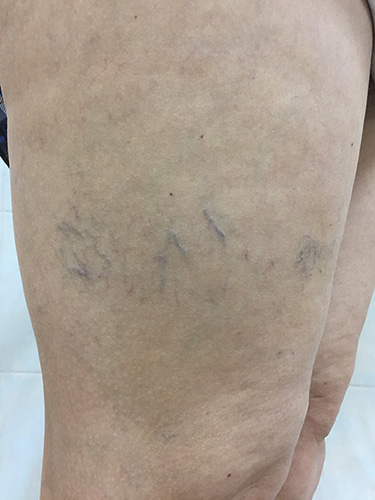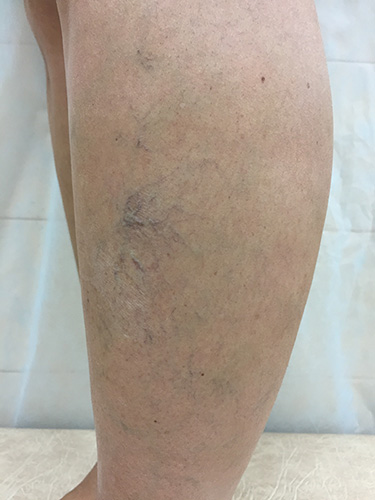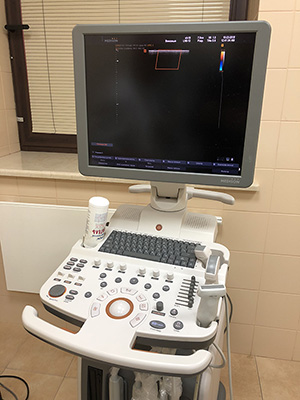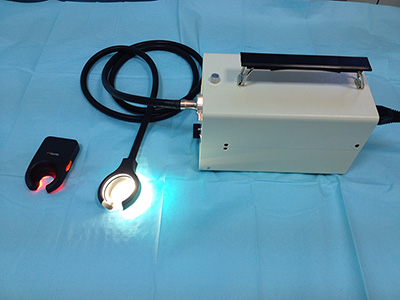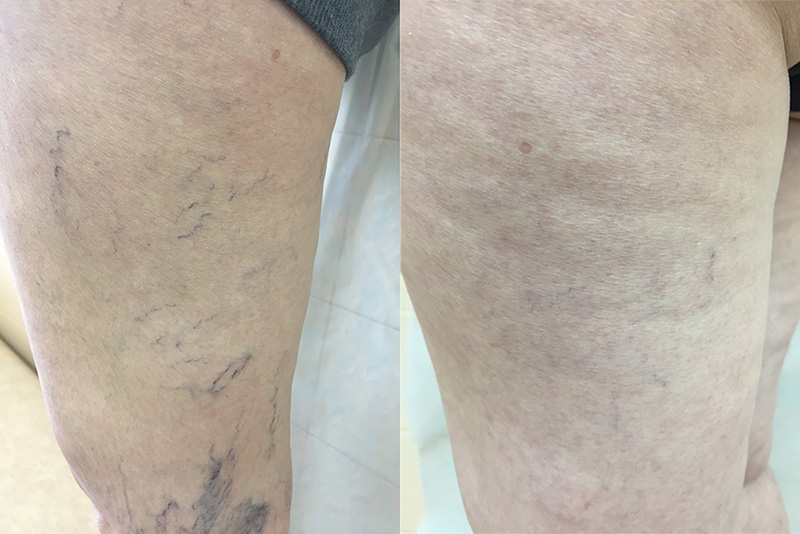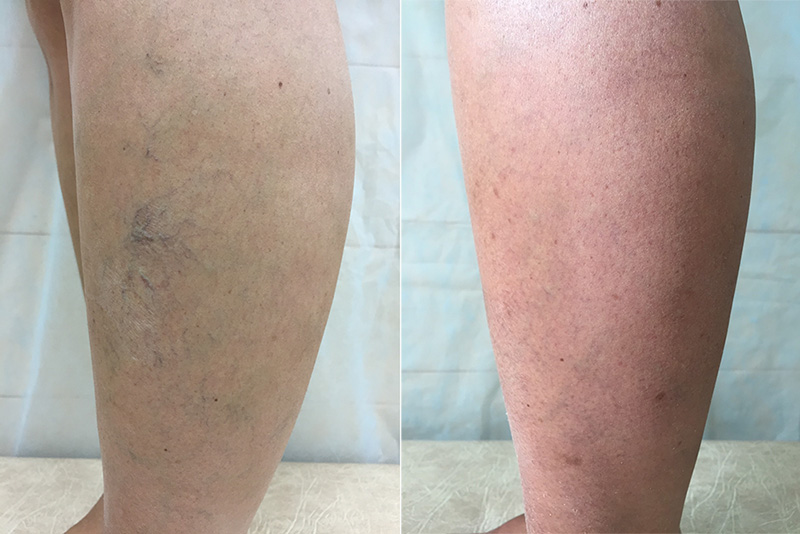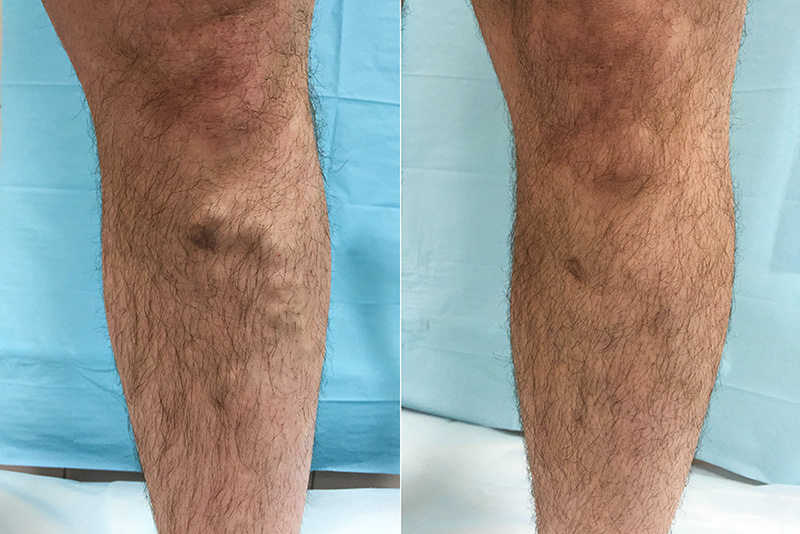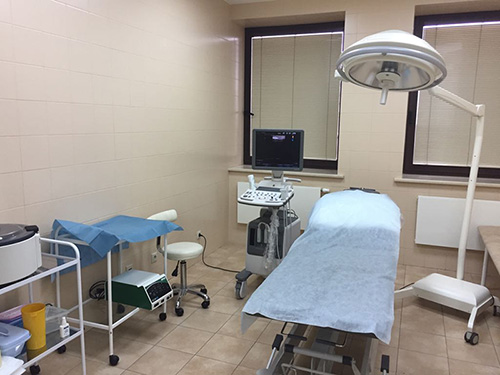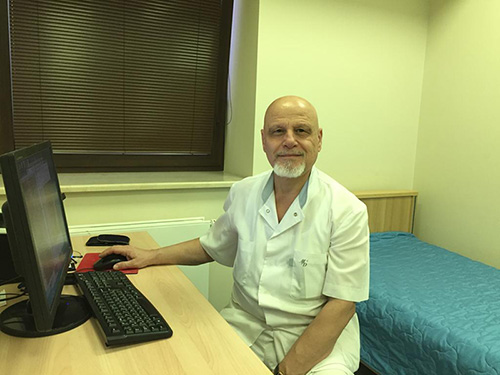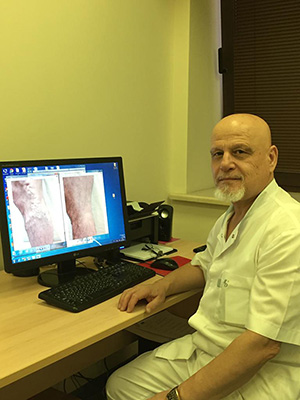Varicose veins
There is no constancy in life. Everything flows and changes. Well-being and excellent health can be replaced by health problems. One of them is varicose veins or varicose veins on the legs.
The disease is often discovered by chance during a medical examination or independently. Localized venous pattern increases on the thighs and shins. It seems that this is temporary and will soon disappear. Then you can notice single or multiple spider veins or meshes (telangiectasias). The understanding creeps in that it will not go away.
Worry arises. What happened? Where did this come from? Of course, everyone around you notices it. Open, fashionable things disappear from the wardrobe. For men, shorts. For women, breeches, short dresses, miniskirts. Going to the beach and fitness center, to the pool and sauna are excluded or turn into a test.
When visible defects are small, you can hide them and not deal with them. However, when enlarged varicose veins acquire an unsightly appearance along with alarming symptoms, you realize the seriousness of the problem. The pathology develops slowly, gradually and does not allow you to live in peace. It brings aesthetic suffering, then physical discomfort and later complications (edema, leg pain, cramps, trophic disorders, inflammation, bleeding). It is very important not to waste time and not to start the course of the disease. Treatment of varicose veins without surgery, anesthesia, pain and scars.
You can see more photos before and after foam sclerotherapy treatment in the "Gallery" section
At the slightest suspicion, consult a phlebologist. If you already know your diagnosis and understand that treatment is necessary, make an appointment with us. We will help you. The cost of varicose vein treatment starts at 5,000 rubles.
You are not sure of the diagnosis and need information. You have many questions.
Varicose veins. What is it? What does it look like? What are the causes? Do I have varicose veins? Self-medication? Where to go? Who treats? How to treat? Do I need surgery? Is it possible without surgery? How to find a good phlebologist? How much does it cost? Diagnostics? Complications? Prevention? Why is it dangerous? What to do? And many others... We will answer your questions in our article.
What is varicose veins on the legs?
The disease is accompanied by a change in the veins, which perform a complex function - they carry blood back to the heart. On the legs, they get hard work and the highest pressure. Because of this, sometimes the flaps of the venous valves, which open in the direction of blood flow and close to prevent it from going back, cannot withstand. A damaged, incompetent valve system does not work well. Blood stagnates or even goes in the opposite direction. Under such pressure, the vessels cannot withstand and expand.
The first signs of a malfunction are vascular networks, spider veins or cobwebs. They indicate an increase in intravascular pressure. Later, the veins protrude above the skin, gradually become tortuous and form nodes (varix - node, swelling). They can be normal, dark blue or crimson. At the very latest stages, the time comes for complications, as a result of decompensation.
Causes. Why does it appear?
There are a number of factors that lead to varicose veins. As a rule, their influence is combined and the more of them, the higher the risk.
- Heredity (genetic predisposition). Weak, stretchable venous walls and incompetent valves are inherited. The risk increases when both parents have this pathology.
- Gender. Women get sick more often, which is explained by changes in hormonal levels (puberty, menstruation, pregnancy, childbirth, menopause).
- Concomitant diseases, injuries, surgeries. Constipation. Cough. Sneezing.
- Excess weight. It additionally loads the vascular network.
- Excessive physical activity. Especially static (sitting or standing for a long time) increases the negative impact on the veins many times over. For example, spending a long time at the computer.
- Occupational hazards. Work associated with long-term static stress (doctors, surgeons, salespeople, teachers, hairdressers, couriers, loaders and others)
- Stress. Depression. Neurosis. All diseases are from nerves
- Age. The older a person is, the weaker the walls of blood vessels
- Pregnancy. Additional weight, stress and hormonal changes in the body significantly increase the risk
- Treatment with hormones, contraceptives
- Alcohol, smoking, overeating
Who usually suffers?
Both women and men of any age (very young, middle-aged and elderly). According to the most modern data, more than 80% of the fairer sex and almost 70% of the stronger sex have venous insufficiency to one degree or another. These are significant numbers. We can all be included in this statistic or are already in it.
Clinical picture. Symptoms.
What does varicose veins look like? What worries you?
- Visual signs and symptoms are the same for both sexes.
- Blue, red, pink or purple small vascular patterns, intertwining patterns (mesh, stars, cobwebs, branches)
- Dilated veins protruding above the skin surface
- Large deformed venous nodes
- Swelling
- Pain, heaviness, burning
- Itching
- Numbness
- Cramps
- Trophic changes (darkening of the skin, hyperpigmentation, spots, peeling)
- Ulcers. Long-term non-healing, chronic wounds
If you see at least one of these manifestations, this is a reason to think and consult.
Diagnostics
The main tasks at the diagnostic stage determine the stage of the process exclude complications
The final diagnosis of varicose veins is made by a phlebologist. He identifies the functional state and pathological changes in the veins and valves.
In the arsenal
- patient survey
- visual examination
- palpation
- functional tests
- hardware studies
In our practice, from hardware studies we use - ultrasound Dopplerography (duplex or triplex scanning) a safe, non-invasive and highly informative technique. It combines the capabilities of ultrasound and Doppler.
Allows
- See the walls and lumen of blood vessels, the state of the valves and their structural changes
- Assess the patency of blood vessels, the nature, direction and speed of blood flow (the presence or absence of insufficiency)
- Exclude deep vein thrombosis
- Mark perforants
We use an expert-level device - Samsung Medison equipped with a Doppler. The examination is performed on the patient in a standing position. The duration can be up to 30-40 minutes.
Ultrasound device equipped with a Doppler
Ultrasound examination (USDS) allows us to solve absolutely all diagnostic issues. And although some clinics still prescribe angiography (phlebography), we do not use it. The fact is that sometimes it can even be dangerous and excessive, as it is associated with the introduction of a radiopaque substance and irradiation (side effects and allergic reactions are possible). If you are offered this procedure, remember that there are contraindications and a test for sensitivity to the drug is required.
Veinlite
We also use the Veinlite for additional visualization. It is necessary to detect dilated intradermal and subcutaneous veins that feed spider veins. This device helps us, makes the treatment process (sclerotherapy) more convenient and improves the results.
Treatment
Why is treatment necessary? What are the possible complications?
As the disease progresses and symptoms increase, the most likely outcome may be severe complications:
- Severe edema
- Dermatosclerosis, hyperpigmentation
- Dermatitis
- Eczema
- Phlebitis
- Superficial vein thrombophlebitis
- Deep vein thrombosis
- Chronic venous insufficiency
- Trophic ulcers
- Pulmonary embolism
- Trophic ulcers
- Venous bleeding from varicose veins
When to see a doctor? When is the best time to start treatment?
It is better to make an appointment at the first suspicions and signs of discomfort in the legs.
- Fatigue
- Nagging pain or discomfort
- Tingling or pins and needles
- Small vascular patterns
- Cramps
- Swelling
The disease is progressive and over time affects more and more veins. It leads to increased symptoms and complications.
- Early treatment and consultation will save normally functioning veins, relieve unnecessary suffering and complications
- Pronounced symptoms, trophic changes in the skin and ulcers are an indication for immediate medical attention
Treatment with folk remedies at home. Self-medication?
Many people try to cope with the problem on their own at home with folk remedies. Do not expect the desired effect. At best, home recipes will bring some short-term relief, but will not relieve the symptoms. At worst, you can lose precious time and come face to face with serious consequences. Act wisely, rationally and do not experiment on your health.
What is the treatment?
Correction of incompetent valves and restoration of veins to a normal state is impossible. Any phlebologist will confirm this. Treatment means turning off or removing varicose veins from the bloodstream using one of the modern methods (sclerotherapy, laser, radio wave, surgery). As a result, congestion is eliminated, which leads to a delay or slowdown in the progression of the disease and a decrease in the likelihood of complications.
Modern methods of treating varicose veins
Progress does not stand still. If earlier surgery (removal) was the only means, now there is a choice:
- Sclerotherapy and microsclerotherapy
- Laser
- Radio wave
- Surgical operations (phlebectomy, miniphlebectomy)
We have long been convinced that of all the variety, the best method is sclerotherapy. With its help, you can solve all the most difficult problems associated with varicose veins. We will dwell on it in more detail.
Sclerotherapy and microsclerotherapy
The most atraumatic, safe and painless option for solving the problem without surgery. A liquid or foamed sclerosant (fibrovein or ethoxysclerol) is injected into the vessel using thin needles and/or microcatheters under ultrasound control. It glues the vein from the inside and the blood does not flow into the switched-off area, redistributing itself along healthy trunks.
Several injections may be required during one session. The first procedure lasts 30-40 minutes, the following 20-30 minutes. Upon completion, compression stockings are put on the leg and the patient lies down with raised legs for 30 minutes. Elastic compression will be necessary during the entire course of treatment (2-4 sessions up to 4 weeks). After this, it is recommended to walk 3-5 km for up to 5 hours to avoid deep vein thrombosis. Final results within 1-3 months.
Blood flow improves, dilated vessels disappear, swelling, pain, cramps and fatigue go away.
The procedure guarantees a long-term therapeutic and cosmetic result, and in some cases, a lifelong one. Success depends on the professionalism of the doctor and the conscientious implementation of the recommendations by the patient.
Early treatment of varicose veins prevents complications such as thrombophlebitis, thrombosis, trophic changes and trophic ulcers. A complete diagnosis, including ultrasound of the veins, is carried out by one doctor immediately during the consultation and, if the patient wishes, foam sclerotherapy treatment can be carried out immediately.
Advantages
- The safest method. Almost no restrictions
- Good therapeutic result, noticeable immediately after the procedure
- Excellent cosmetic result
- No scars
- Outpatient. No hospitalization. Maintaining your usual lifestyle
- The patient can walk, do fitness and even fly on an airplane
- You can drink alcohol in moderation
- You can love and be loved
- Without pain
- Several veins of any diameter and location can be removed at the same time
- In one course. In one procedure
- Affordable price
- The procedure is performed by a phlebologist, without assistants and a nurse.
- One-stage
- In one hand
- In case of new varicose changes after several years, a simpler and more acceptable solution for the patient
- Easily tolerated regardless of the patient's age. A safe method of treating patients over 80 years old.
Disadvantages
- A good technique in the hands of a professional has no downsides
Contraindications
- Individual intolerance and allergic reactions. Theoretically possible situation, but in our practice (more than 6000 patients) we have not encountered such a phenomenon
- Pregnancy and breastfeeding. It is better to wait until the birth and breastfeeding is over
Foam sclerotherapy is a method that can also rid you of large, medium and small varicose veins, spider veins and rosacea on the face. Return to your normal life in 50 minutes. No restrictions during the course of treatment. The only condition of treatment is wearing stockings for a certain period, which is dictated by the degree and complexity of varicose veins.
Foam sclerotherapy gives an excellent therapeutic and magical cosmetic effect
Laser treatment (EVLK, EVLO, EVLT or endovascular laser coagulation)
A special fiber is inserted into the vessel through a puncture and after exposure from the inside, a spasm and fusion with closure of the lumen occurs. The laser turns off the vein from the bloodstream.
Advantages
- High-tech, expensive method
Disadvantages
- High cost
- Expensive equipment
- Need for tumescent, local anesthesia
- Large diameter of the vein does not allow to do without incisions
- A large diameter vein can come apart and subsequently return
- Flight restrictions
- May be painful
- A high dose may cause burns, and a low dose may cause a relapse
- Treats varicose veins above the knee, but not below the knee
Radiofrequency ablation or obliteration (RFA or RFO)
An intravascular method in which a special catheter (waveguide) is inserted through a puncture, closing or “welding” the lumen of the vein using radio wave action (heating).
Advantages
- High-tech, expensive method
Disadvantages
- High cost
- Expensive equipment
- Need for tumescent, local anesthesia
- May cause pain
- A high dose may cause burns, and a low dose may cause relapse
- Concentration decreases
Surgical operation (phlebectomy, miniphlebectomy, microphlebectomy or stripping)
In our opinion, surgical vein removal should now be used extremely rarely, only in severe and advanced cases. The most traumatic and aesthetically unjustified method of treatment with many disadvantages.
Advantages
- no
Disadvantages of the operation
- Removal of varicose veins does not mean a cure
- The course of treatment is longer and the costs are higher
- In a hospital setting. Sometimes hospitalization for several days.
- Under general anesthesia, spinal or local anesthesia
- The rehabilitation process is 2-4 weeks or longer
- Incisions and postoperative scars
- The intervention is usually performed on each leg separately with a break
- Removal of reticular veins and spider veins is impossible
- Complications are more common, and their treatment is again surgical
- In case of relapse, repeated surgical treatment is less acceptable for the patient
- Requires repeated examinations and multiple sessions of additional correction with sclerotherapy
- Frequent relapses (25-43% of cases within 1-5 years)
- The operation removes large and medium-sized veins, and small ones remain
- A costly process (surgeon, operating nurse, instruments, materials, anesthesia)
- Multi-stage
- The operation and subsequent correction can be done by different people (no continuity)
- Sutures and postoperative scars
- There may be pain for up to a year after the operation
Side effects and complications
- Thrombophlebitis
- Deep vein thrombosis
- Treated conservatively.
Compression therapy. Compression stockings
Compression stockings are one of the main components of the varicose vein treatment process. They are worn regardless of the treatment method. Underwear varies in shape and compression strength. Before buying, a consultation and recommendations from a phlebologist are required. Otherwise, you may buy the wrong thing. Compression stockings are worn around the clock from 1 to 4 weeks after a session of sclerotherapy, laser, radio wave or surgery. They must be the right size and purchased in a specialized store. Any knitwear gradually stretches and needs to be changed after several months of wear.
Drug therapy for varicose veins
We prescribe venotonics (phlebotonics) based on flavonoids (Detralex, Phlebodia, Antistax) according to indications.
Where to treat varicose veins in Moscow?
You can contact our clinic. We have been specializing in varicose veins for over 35 years and are located in the very center of Moscow. On our website you can find information about the problem, read an article, watch photos and videos on the Youtube channel.
We are easy to reach from any district of Moscow (Central Administrative District, Eastern Administrative District, North-Eastern Administrative District, South-Western Administrative District, Southern Administrative District, Northern Administrative District, Western Administrative District, North-Western Administrative District) and the Moscow Region. People come to us from other cities in Russia, the CIS countries and far abroad. The geography is very wide: St. Petersburg, Kazan, Sochi, Krasnodar, Ufa, Rostov-on-Don, Tver, Kaluga, Tula, Yekaterinburg, Novosibirsk. We have had patients from Israel, the UAE, Egypt, Ukraine, Belarus, Kazakhstan, Uzbekistan, Kyrgyzstan and other countries. We help everyone who comes to us. Consultation, ultrasound of veins and treatment are carried out by one doctor, which increases their effectiveness.
Which doctor to choose? Why should you contact Aksam Ali?
Phlebologist Aksam Ali Kheirbeik is the most experienced sclerotherapy specialist in Moscow.
Unique advantages
- Good attitude
- Patient care
- Exclusive technique
- Masterful mastery of foam sclerotherapy technique and non-surgical treatment
- Extensive experience (over 35 years of experience, has treated over 6 thousand people)
- Responsible, serious approach
- Careful analysis of the situation and selection of the best treatment plan
- 100% confidence and guarantee of results
- Compliance with the international protocol for performing the procedure
- It is important to have an excellent result and a satisfied patient
- You can call the doctor at any time of the day or night if necessary
Rehabilitation. Prevention. How to avoid? How to prevent?
Only sclerotherapy practically does not require rehabilitation in the usual sense of the word. It enables the patient to continue their normal life, doing only preventive measures.
To prevent the onset and progression of the disease before and after treatment, follow our preventive recommendations:
- Lead an active lifestyle
- Follow a diet (less salt, fried, spicy)
- Do exercises
- Control your weight
- Control your hormonal levels
- Treat cough and constipation promptly
- Wear loose clothing (do not wear tight or cramped clothing)
- Avoid excessive physical activity (static and dynamic)
- Avoid sitting and standing for long periods
- Avoid hypothermia
- Wear compression hosiery (as recommended by your doctor)
- Get rid of heels
- Avoid baths and saunas
- Avoid bad habits (smoking, alcohol)
Physical exercises
We recommend light daily exercise to train your leg muscles, improve blood circulation and vein function for prevention and rehabilitation:
Sitting
- Bend and straighten your feet
- Raise your legs to heart level
Lying on your back
Bicycle. With your legs raised up, imitate riding a bicycle. Spin imaginary pedals. Scissors. Raise your legs off the floor and cross them vertically and horizontally, as if cutting the air with scissors.
Standing
- While standing, shift from foot to foot
- Rise up on your toes and lower yourself
- Shift your body weight from your heels to your toes and from the inside of your feet to the outside
- Walking in place. Very useful. The leg muscles contract, compressing the veins, pushing blood toward the heart
The loads should be enjoyable and should not be excessive. If pain or discomfort occurs, you need to stop everything and consult a doctor to find out the reasons.
Cost of treatment
- Consultation with a surgeon, phlebologist 1000r.
- Consultation 1000r.
- Duplex scanning of veins of the lower extremities (ultrasound) 2000r.)
- Follow-up consultation 500r.
- Ultrasound of veins from 2000r.
- Sclerotherapy of spider veins from 5,000 rubles
- The cost of treating varicose veins on one lower limb depends on the severity of varicose veins and varies from 20,000 to 65,000 rubles.
You can see the prices in more detail in the section «Price list»

